2016 Toyota Prius Review by Steve Purdy +VIDEO
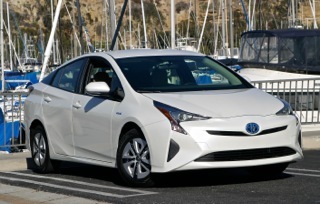 |
2016 TOYOTA PRIUS
First Drive
By Steve Purdy, Senior Editor
The Auto Channel
Michigan Bureau
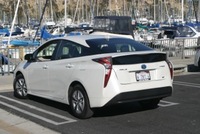 |
This new Prius represents just the fourth generation of this iconic “green” car, favored by those who think of themselves as ecologically responsible and forward thinking. Of course, just as important to many owners is simply the economical total cost of ownership. That concept continues as Toyota designed this new Prius on their all-new TNGA (Toyota New Global Architecture) platform with a lower center of gravity. That platform will be used internationally for a variety of new products. They tout, among other advances, a 60% increase in rigidity, a new, more sophisticated double-wishbone independent rear suspension, new spring rates and a variety of other under-the-skin improvements.
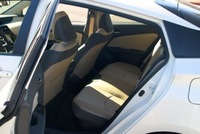 |
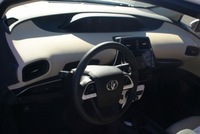 |
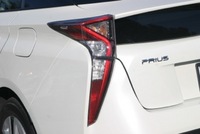 |
Notwithstanding the Prius’ slightly higher curb weight the new car’s mpg ratings go up nicely. The EPA estimates 54 mpg in the city for most models and 58 mpg for the new Eco grade car that reduces weight even more and adds some aerodynamic efficiency without compromising too much in other areas. Toyota proudly claims this to be the best fuel mileage for any car without a plug. Being just a smidge lower, wider and longer than the outgoing car, and with some underbody covers, it measures a remarkable 0.24 coefficient of drag. That helps incrementally with fuel mileage as does the automatic grille shutter.
 |
Available on most Prius models is a new “Safety Sense” system with automatic pre-collision braking. We tested the system at a nearby abandoned airport where they set up a couple of demonstrations of how the system will intervene and come to a complete stop under certain circumstances if the driver fails to take control in time. It was a bit disconcerting at first as instinct told me we were going to hit the barrier. But when I was finally able to let the car control the situation it came to a sharp, hard stop just inches from the simulated van and pedestrian. The system will cost about $600 extra, but for some folks might be worth the cost. Also standard on all models is a rear-view camera.
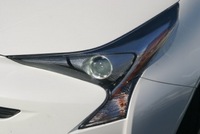 |
We did, however, find the overall handling quite good with decent steering feedback and surprisingly flat cornering - due, probably to a combination of the new rear suspension and the much more rigid chassis. We also found it remarkably quiet inside as they’ve added much more sound deadening material under and around the cabin.
Prices for the new Prius range from $24,200 for the bottom-end Prius Two to $30,000 for the Prius Four Touring. Lots of high-end option will now be available like self-parking, lane departure warning, pre-collision system, pedestrian detection, automatic high-beam control and adaptive cruise control.
Toyota’s new car warranty will cover the car for 3 years or 36,000 miles and the powertrain for 5 years or 60,000 miles. Hybrid components are covered for 8 years or 100,000 mile.
The new Prius will be at dealers early next year – 2016.
© Steve Purdy, Shunpiker Productions, All Rights Reserved
The Most In-Depth Toyota Vehicle Shopper's Research - Anywhere!


